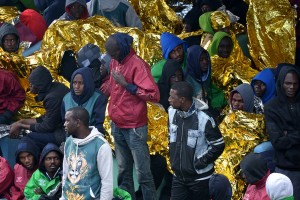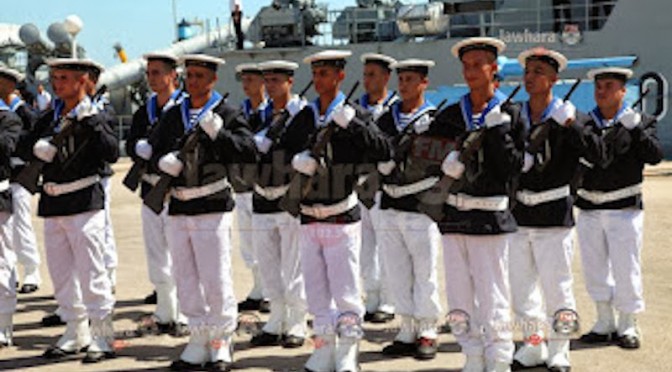While much international attention is directed toward the flow of refugees from Syria and Iraq to Europe, which has prompted the partial suspension of the European Union’s Dublin Regulation by the German and Czech governments and even sent shockwaves through Canada’s ongoing federal election, hundreds of Libyans continue to make the perilous journey across the Mediterranean Sea. Kos Island has become famous around the world as the front line of the migrant crisis,

yet Italy’s Lampedusa continues to face an overwhelming number of both political refugees and economic migrants fleeing Libya in the wake of that country’s civil war and resulting unrest.
The Libyan Navy is in no position to be of assistance in managing the crisis. While it has a single Soviet-built Natya-class minesweeper still in operation, the remaining vessels of the Libyan Navy, comprised of a Soviet-built Koni-class anti-submarine warfare frigate and two Polish-built Polnocy-C-class landing ships, are reportedly undergoing refits in Malta and France. Though the Libyans doubtless possess some collection of small patrol craft, the force has thus far been unable to effectively police Libyan waters. In March 2014, an oil tanker from the rebel-held port of Sidra successfully evaded a Libyan Navy blockade, leaving a team of United States Navy SEALs to intervene and seize the tanker.
Fortunately, the Tunisian National Navy has proved itself to be a reliable partner in securing the Mediterranean and averting humanitarian disaster. In August 2015, Tunisia commissioned its first locally built patrol boat, Al Istiklal (Independence). This development made Tunisia the first country in the Arab world to develop a shipbuilding industry of its own and only the second in Africa, following South Africa’s lead. Reportedly, Al Istiklal is an 80-ton patrol boat that measures 26.5 meters in length and is 5.8 meters wide, enjoys a top speed of 25 knots and a range of 600 nautical miles, all while equipped with a 20mm cannon, two machine guns, and a thermal imaging camera. This expansion of Tunisian maritime capabilities was bolstered by four patrol boats of unidentified classification from the United States Navy (USN) earlier in 2015, with a further three boats expected for delivery by the end of 2016.
It is difficult to accurately assess the size of the Tunisian National Navy, but best estimates place the total number of vessels operated by Tunisia at 40 gunboats or patrol

boats, one landing craft, and six other non-combat vessels. The largest vessel operated by Tunisia’s maritime forces, President Bourgiba, was a decommissioned Edsall-class destroyer escort, USS Thomas J. Gary, which was transferred to Tunisia in 1973 and rendered no longer operational by a severe fire in 1992, having served at sea for almost 50 years in total. Since then, the largest vessels operated by the Tunisian National Navy are its six Albatross-class fast attack craft manufactured in Germany by Lurssen, with a displacement of almost 400 tons each. In short, Tunisia’s maritime forces are non-expeditionary and have been focused entirely on coastal defense for more than two decades.
It is unclear whether the US sees the transfer of defense equipment like the aforementioned patrol boats as part of a broader effort to counter al-Qaeda in the Islamic Maghreb (AQIM) or other militant Islamist groups. But it certainly has paid dividends in rescue efforts. As recently as June 2015, Tunisian patrol boats saved some 650 migrants and refugees bound for Lampedusa on unsafe rafts. A June 2015 attack on a Tunisian beach resort by Libya-based terrorists, in which 38 people were killed, demonstrated how closely connected Tunisia’s security is with that of its neighbors, Libya and Algeria. As such, Tunisia is bound to continue to play a significant role in securing the North African coast. Nonetheless, it would be prudent for European members of NATO to press for a formalization of this relationship, similar in many respects to the Tactical Memorandum of Understanding struck with the Kingdom of Morocco in 2009 to secure Moroccan participation in Operation ACTIVE ENDEAVOR, NATO’s ongoing maritime mission to monitor traffic and combat terrorism in the Mediterranean. With or without European recognition, Tunisia appears set to be a maritime leader in its own right.
Paul Pryce is the Research Analyst for the Atlantic Council of Canada’s Maritime Nation Program and a long-time member of the Center for International Maritime Security (CIMSEC).

